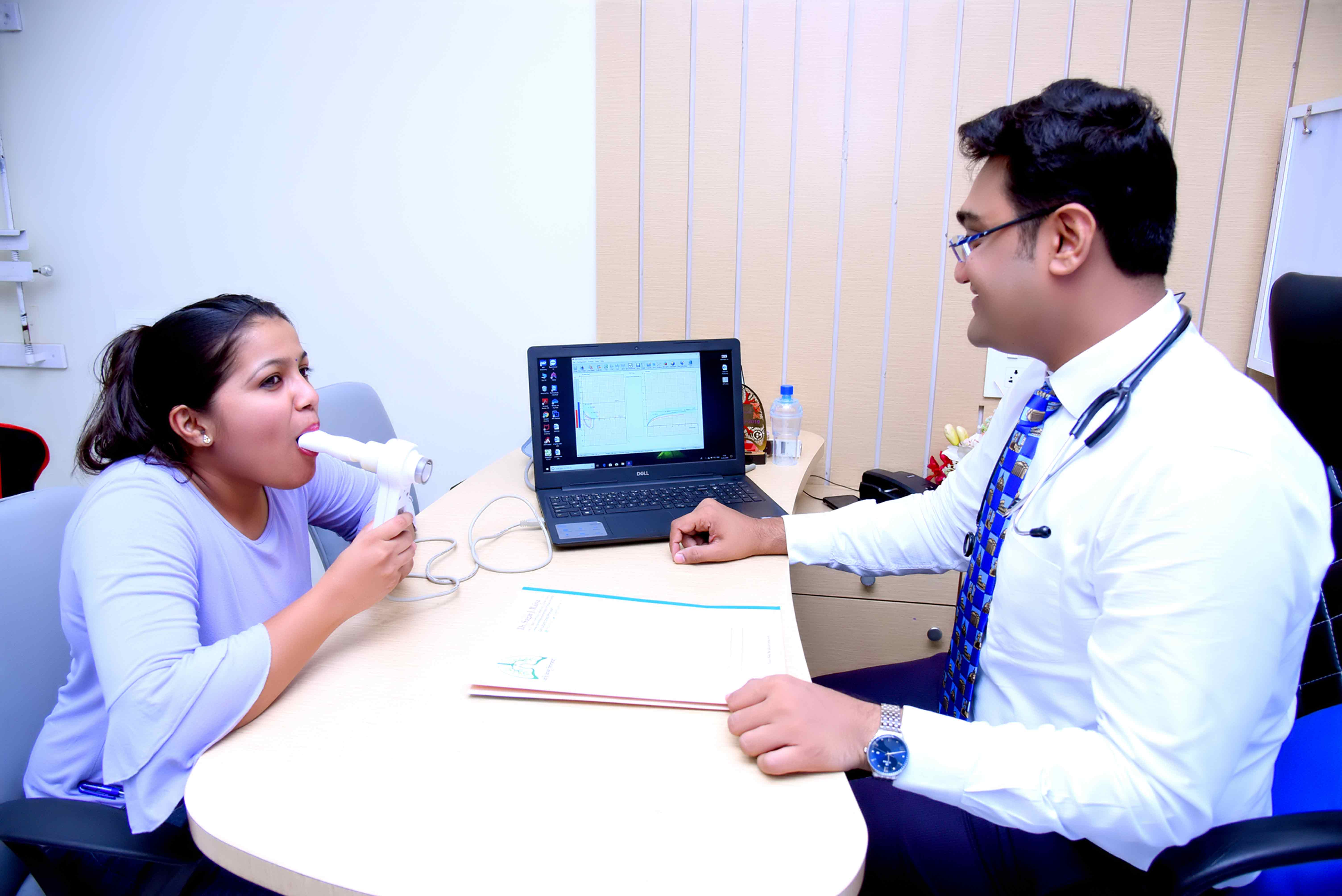
The test determine determines how much air your lung lungs can hold, how quickly you can move air in and out of your lungs. This test can diagnose lung diseases like ASTHMA, COPD, ILD etc; measure the severity of lung problems and check to see how well treatment for lung disease is working.
Lung functions are done to
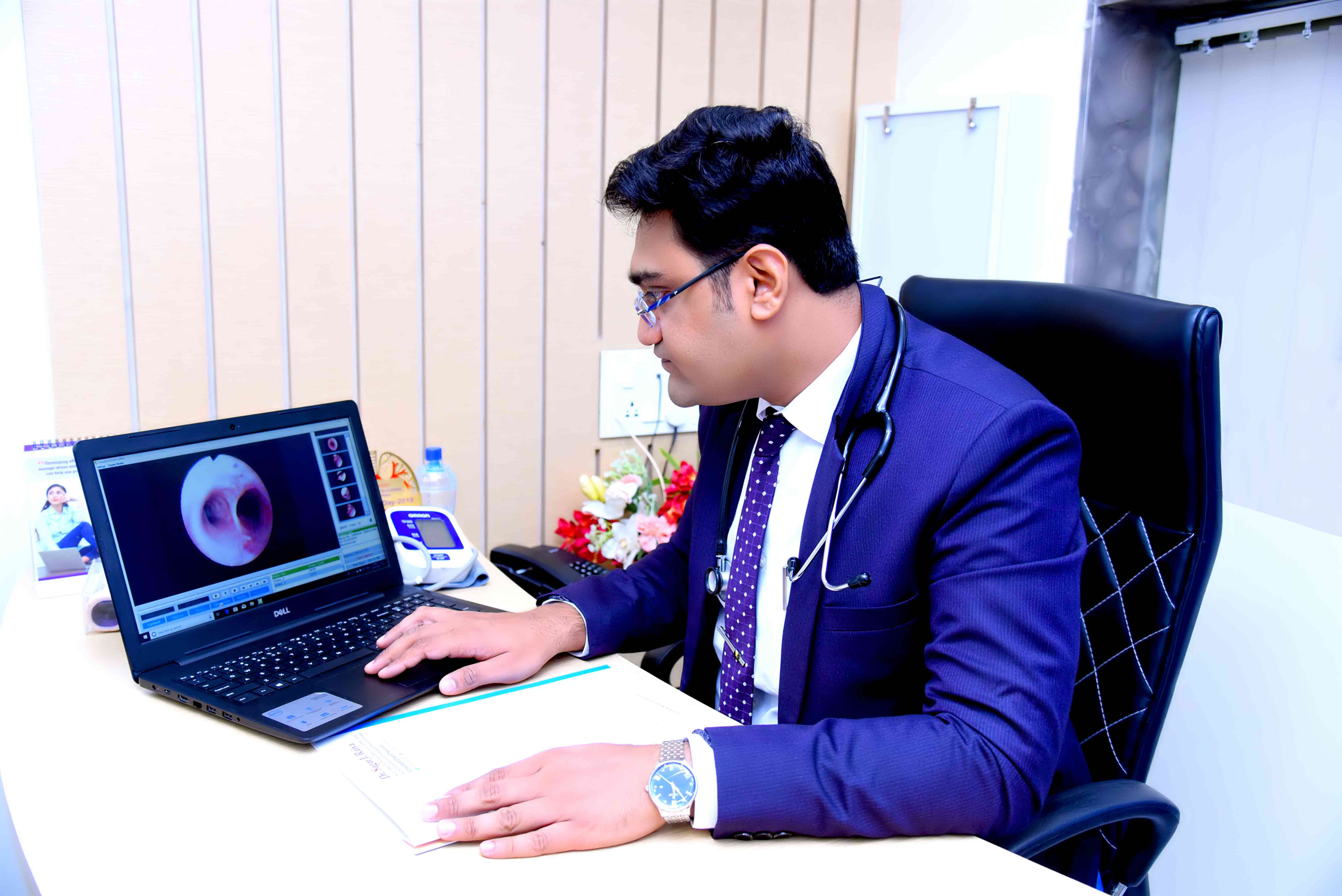
Bronchoscopy is an endoscopic technique of visualizing the inside of the airways for diagnostic and therapeutic purposes. An instrument is inserted into the airways, usually through the nose or mouth, or occasionally through a tracheostomy. This allows the doctor to examine the patient's airways for abnormalities such as foreign bodies, bleeding, tumours, or inflammation inside the lungs.
Bronchoscopes can be Rigid or Flexible with video equipments.
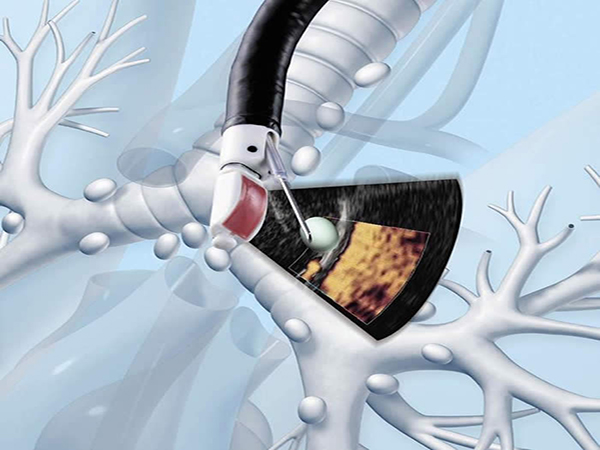
Endobronchial ultrasound (EBUS) is a minimally invasive but highly effective procedure used to diagnose
lung cancer, infections, and other diseases causing enlarged lymph nodes in the chest.
It is done by specialised bronchoscope with ultrasound transducer on its tip or on probe. In TBNA needle is passed real time into the lymph node to obtain the sample for accurate diagnosis.
Eg Tuberculosis, Sarcoid, Cancer.

Medical Thoracoscopy / Pleuroscopy is a medical procedure involving internal examination, biopsy,
and/or resection of disease or masses within the pleural cavity and thoracic cavity. Thoracoscopy may be performed either under general anaesthesia or under sedation and local anaesthesia.
Indication: Undiagnosed pleural effusion despite repeated pleural fluid aspiration to exclude diseases like tuberculosis, malignancy.

If you are suffering from snoring, day time sleepiness, feeling tired and fatigued, obesity, hypertension etc. then you might be suffering from Obstructive sleep apnoea (OSA). Sleep related breathing disorders including OSA can be diagnosed by sleep study, also called as polysomnography. Home sleep study are suitable for majority of patients without comorbidities, some patients requires in-lab polysomnography to be done in hospital under observation. It involves connecting various electrodes to your body (similar to done during taking ECG) to record sleep stages, oxygen saturation, heart rate etc to look for sleep disorders.
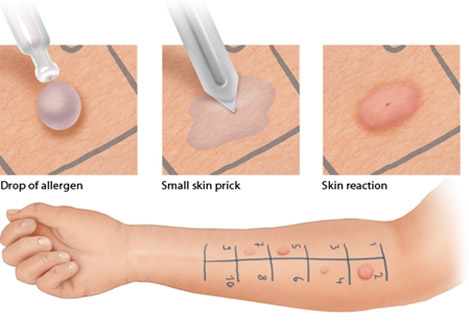
A skin prick test, also called a puncture or scratch test, checks for immediate allergic reactions to as many as 200 different substances at once.
This test is usually done to identify allergies to pollen, mold, pet dander, dust mites and foods. In adults, the test is usually done on the forearm.
Allergy skin tests are not painful. This type of testing uses needles (lancets) that barely penetrate the skin's surface.
After cleaning the test site with alcohol, the nurse draws small marks on your skin and applies a drop of allergen extract next to each mark.
He or she then uses a lancet to prick the extracts into the skin's surface.
About 15 minutes after the skin pricks, the nurse observes your skin for signs of allergic reactions.
If you are allergic to one of the substances tested, you'll develop a raised, red, itchy bump (wheal) that may look like a mosquito bite.
The nurse will then measure the bump's size and record the results. Next, he or she will clean your skin with alcohol to remove the marks.
To know more – Read blog on allergy testing – CLICK HERE
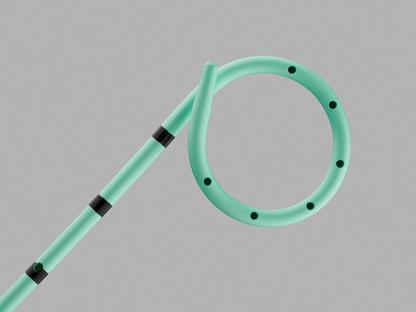
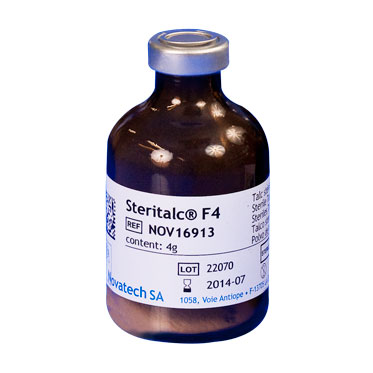
Pigtail or ICD insertion is putting a chest tube, which is needed for patients having pus, blood and air around the lungs. In medical terms it is called as Empyema, Hemothorax, Pneumothorax, Hydro-pneumothorax. Inserting chest tube releases pressure from outside of lungs and helps in better expansion of lungs and reduction of infection from pleural space.
Pleurodesis is a procedure to obliterate the pleural space so as to prevent recurrent pleural effusion like in malignant pleural effusion or recurrent pneumothorax chemical pleurodesis by French grade talc is one of the most common & effective technique for pleurodesis in malignant pleural effusion. Sometimes when pleurodesis couldn’t be done or it fails, indwelling pleural catheter (IPC) insertion is required in malignant pleural effusions.

Pulmonary Rehabilitation (Rehab) is a medically supervised program, to improve the health and well-being of patients suffering from prolonged respiratory diseases. It is program of exercise, education, and support to help patients learn to breathe and function at the highest level possible.
It includes endurance training, chest therapy, education on lung hygiene and healthy living by activity modification, counselling to reduce stress & trigger factors and smoking cessation thus helping patients to return to an active and healthy lifestyle.
The exercise program is an “individually tailored and designed” such that it fits each patient’s needs.
It eventually helps the patients achieve optimal recovery of function and movement, and enhance overall quality of life, giving psychosocial and economic benefits.

There are approximately 600 ingredients in cigarettes. When burned, cigarettes create more than 7,000 chemicals. At least 69 of these chemicals are known to cause cancer, and many are toxic.
Smoking cessation is the term used to describe the process a person goes through to quit smoking. The most common forms of quitting smoking include cold turkey, nicotine replacement therapy, nicotine patches, and antidepressant or stimulant medication. Depending on the person, more than one form may be required to successfully quit.
Tobacco use can lead to tobacco/nicotine dependence and serious health problems. Quitting smoking greatly reduces the risk of developing smoking-related diseases.